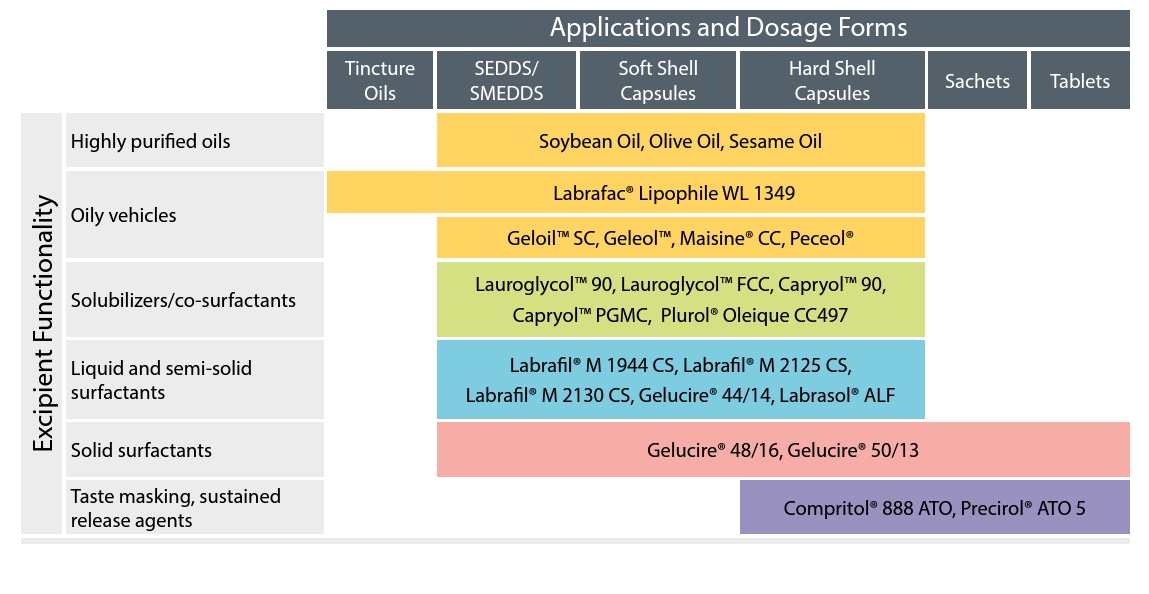Lipid Excipients for Cannabinoid Drug Products

The introduction of the cannabis plant into Western medicine dates to the 19th century when the plant was first used as an additive to patented medicines. The development of cannabis based therapies in the modern sense however came to a halt in the 1970’s after the passing of laws that have since categorized cannabis as a scheduled (narcotic) substance.
Amidst the regulatory constraints, over one hundred active molecules (phytocannabinoids) of the plant have been identified. Synthetic forms of cannabinoids such as dronabinol, nabilone, and cannabidiol have been developed and marketed for treatment of nausea associated with chemotherapy and for myoclonic seizures in patients two years of age and older.However, it was not until 2018 that the US FDA approved Epidiolex®, the first purified phytocannabinoid isolated from the cannabis plant. Epidiolex® is indicated for severe forms of epilepsy, namely Lennox-Gastaut and Dravet syndromes.
The Benefits of Lipid Excipients in Oral Drug Delivery
Lipid formulations are shown to improve the bioavailability of cannabinoids by improving solubility, intestinal permeability, and enhancement of the lymphatic route of absorption. Among the key mechanisms associated with oral lipid formulations in enhancing bioavailability is the improved drug wettability and dispersion in the GI fluids, through natural digestion mechanisms that help maintain drug solubilization in vivo. The effect lasts long enough for the drug to approach the enterocytes for absorption. Recent studies have found that the bioavailability of THC and CBD from a sesame oil formulation was 2.5-fold and 2.9-fold higher compared to a lipid-free formulation (Zgair, 2016, 2017). However, not all lipids are equal in the nature of their impact on permeability and absorption. Lipid systems may vary by fatty acid chain length and the type/degree of esterification. The choice of excipient is guided by the overall objectives of the dose and the type of dosage form e.g. tablet, capsule, or powder. The formulation may be fine-tuned to improve lymphatic absorption and/or rate of drug release. Due to their unique properties and versatility, lipid formulations may be designed to tackle several of the below listed bioavailability objectives in a single lipid formulation:
- Solubilization of the API in the dose
- Drug dispersion and dissolution in the GI tract
- Enhanced permeability across enterocytes and wider absorption window
- Enhanced lymphatic transport of lipophilic drugs.

